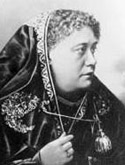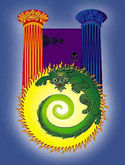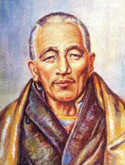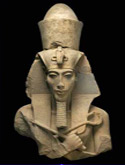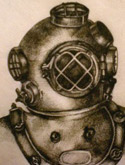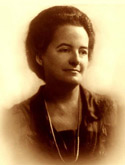Simon Bolivar: Liberator of South America
(1783-1830) July 24, 1783, Caracas, Venezuela, 10:00 PM, LMT. (Source: recorded) Died of tuberculosis, December 17, 1830, near Santa Marta, Colombia. If one gives credit to the validity of the Sabian Symbols there is one symbol which is extraordinary evocative and would require a birth from 9:56:04 PM to 9:59:26 PM, because it would read, “A cameo profile of a man in the outline of his country”.
 (Ascendant, Aries with Mars rising in Aries; MC, Capricorn with Saturn in Capricorn conjunct the MC and Jupiter also in Capricorn; Sun in Leo; Moon in Gemini; Mercury conjunct Uranus in Cancer; Venus in Virgo; Neptune in Libra conjunct DSC; Pluto in Aquarius.)
(Ascendant, Aries with Mars rising in Aries; MC, Capricorn with Saturn in Capricorn conjunct the MC and Jupiter also in Capricorn; Sun in Leo; Moon in Gemini; Mercury conjunct Uranus in Cancer; Venus in Virgo; Neptune in Libra conjunct DSC; Pluto in Aquarius.)

 Simon Bolivar was a great South American soldier, statesman and revolutionary who came to be known as “El Libertador” (The Liberator). In the early part of the nineteenth century he led the revolt against Spanish Rule. After successfully leading eventually revolts in New Granada (Gran Columbia, including Venezuela, Ecuador and Columbia) He became the president (in fact the dictator) of both Columbia and Peru. His over-arching goal was to unite and independent South America into a federation of cooperative countries. While he successfully drove the Spanish from northern South America, the unions he created were fragile and were eventually destroyed from within. Though his dream of a united South America was not realized, his vision set the tone for great political and social progress in the South American Continent, and he is honored today as South American’s greatest revolutionary and the father of South American independence.
Simon Bolivar was a great South American soldier, statesman and revolutionary who came to be known as “El Libertador” (The Liberator). In the early part of the nineteenth century he led the revolt against Spanish Rule. After successfully leading eventually revolts in New Granada (Gran Columbia, including Venezuela, Ecuador and Columbia) He became the president (in fact the dictator) of both Columbia and Peru. His over-arching goal was to unite and independent South America into a federation of cooperative countries. While he successfully drove the Spanish from northern South America, the unions he created were fragile and were eventually destroyed from within. Though his dream of a united South America was not realized, his vision set the tone for great political and social progress in the South American Continent, and he is honored today as South American’s greatest revolutionary and the father of South American independence.
The chart proposed seems reasonably accurate, though may need some fine tuning. Bolivar’s father died when he was three years old, and in that year, the progressed Ascendant had moved into the same degree as rising Mars. As well there were three solar eclipses: one on his Pluto in Aquarius, one on his Sun and one, later on his MC. This is a formidable array of eclipses touching very sensitive points in the chart and more powerful because they are solar eclipses. Such indications are most suitable for the death of a parent.
Sun SEcl (X) Tr-Tr Jan 30 1786 NS 11:45 10°Aq28′ D Sun SEcl (X) Tr-Tr Jul 25 1786 NS 17:46 02°Le26′ D Sun SEcl (X) Tr-Tr Dec 21 1786 NS 02:06 29°Sg05′ D
Further when Bolivars mother died six years later there was a solar eclipse very close to his Ascendant.
Sun SEcl (X) Tr-Tr Mar 23 1792 NS 02:57 02°Ar49′ D
The second solar eclipse of this nature occurred in the year 1819 – the year in which Bolivar conducted one of the most daring and brilliant campaigns in military history, marching his small army through flood-swept planes and through treacherous, icy mountain passes considered by the Spanish as impassible. The audacity of this exploit was extraordinary. The Spanish were taken completely by surprise. The royalist army surrendered to Bolivar. It was a turning point in the history of northern South America. It is no surprise, then, to find another solar eclipse within a degree of so of the proposed Ascendant and transiting Jupiter hovering in the vicinity of the progressed MC.
Sun SEcl (X) Tr-Tr Mar 26 1819 NS 08:44 04°Ar30′ D
This same kind of fateful solar eclipse appearing at Bolivar’s Ascendant was repeated in the year of his death in 1830. The Ascendant indicates the direction which the Solar Angel would have the personality follow if the incarnation is to be considered successful. The Solar Angel is a solar Angel, and solar eclipses appear especially related to the will of that guiding Angel as it influences the incarnated life of its personality.
Sun SEcl (X) Tr-Tr Mar 24 1830 NS 23:38 03°Ar28′ D
We know from these three indications, therefore, that we are very close to an accurate astrology chart and may trust the this chart (whether or not it is a degree or two off) for the kinds of indications for which the esoteric astrologer searches – namely those which have to do with soul destiny and its fulfillment.
Simon Bolivar was born in Venezuela. He traveled around Europe when the effects of the French Revolution were spreading. The power to learn quickly is conferred by the Moon in intelligent Gemini in the third house of mind. He became inspired (Mars oppose Neptune, Mercury conjunct Uranus) to fight for independence for all South America.
Bolivar became leader of the Venezuelan republicans in 1812. He led a revolt in 1816 and established Venezuela’s independence, although it was not recognized by Spain. In 1819 Bolivar carried the struggle into Columbia, defeated the Spanish and became its first president. He returned to Venezuela, defeated the Spanish at Carabobo in 1821, and captured Caracas. This confirmed Venezuela’s independence. He then went south to help other colonies in revolt. When San Martin resigned as Protector of Peru in 1822, the republicans asked Bolivar to help expel the remaining Spanish forces from the country. This he did, and in 1824 was made “dictator”. (Aries, Leo and Capricorn clearly confer dictatorial powers. We see this in Charlemagne and Bismarck. In the case of Bolivar and Charlemagne a higher law and idealism are involved.) He moved to Upper Peru the following year and founded a republic, later named Bolivia after him.
Having reached the high point of his power as the Liberator of northern South America, he sought to create a League of Hispanic American States, a project which came to a fruition of sorts in 1826. But ambitions between the newly independent countries of South America ran high, and before long (as Bolivar had prophesied) civil war broke out. It soon became clear that Bolivar’s greater dreams for hemispheric solidarity were not to be fulfilled. Amidst continuing revolts and challenges to his authority (at one point he narrowly escaped an assassination attempt), he finally realized in 1830 that his continuing political presence presented a danger to the internal and external peace of the nations that owed their independence to him. He planned to seek refuse in Europe, but cancelled his plans when he discovered that his close friend and chosen successor had been assassinated. He retired to the home of a benefactor and died there of tuberculosis. (Transiting Uranus was conjuncting his natal Pluto; there was an eclipse on his SA directed Uranus; transiting Pluto was conjuncting natal Mars; and all this was in the period of a solar eclipse on his Ascendant.)
Bolivar’s chart is extremely powerful for the first ray. The three signs/constellations transmitting the first ray are all powerfully tenanted. The Sun is found in first ray Leo in the house and Leo and first ray Aries rises, with Mars (exoteric ruler of Aries and expressive of the first ray as well as sixth) rising in Aries, and first ray Saturn (probably its personality ray) culminating in first ray Capricorn (its own sign and in a house in which it is “dignified”). Mars and Aries conjoined at the Ascendant confer the inspiration to revolt, and the willingness to attempt that which seems impossible. Leo confers abundant authority and magnetism and the ability to centralize control within oneself. It gave as well great a sense of one’s own indispensability, for the idea of “president for life” (historically rather common in South American politics) took root with Bolivar and the constitution he created to ensure his continuing power and control. Capricorn, another first ray sign/constellation (the presence of which is greatly strengthened because Saturn, the exoteric and esoteric ruler of Capricorn is found in its own sign and its own house) conferred an inescapable sense of responsibility and respect for the law – at its best, a higher law – the Law of Freedom. At its worst, this Saturn in Capricorn position contributed to the authoritarianism for which Bolivar became well known.
We must notice a grand cross (the cross of synthesis) in Bolvar’s chart. Mars in Aries opposes Neptune in Libra, conferring idealism (idealism for a better social order). Saturn in Capricorn opposes Uranus and Mercury in Cancer, giving the balance between innovation and realism. Further, the cross is representative of the Cardinal Cross – the Cross of will and of spirit. Upon this Cross the three rulers of Aries (Mars, Mercury and Uranus) are to be found.
Mars rising in Aries is obvious in its implications – courage, initiative, the willingness to confront the opposition. This position gave to Bolivar a readiness to rise in combat and fight relentlessly, as well as great bravery and a willingness to take extraordinary risks.
The real revolutionary impulse, however, comes from the conjunction of Mercury (the esoteric or spiritual ruler of Aries) and Uranus (the hierarchical ruler of Aries) in the sign Cancer, the sign of the “Mother” Revolutionary ideas come through this combination, especially in relation to the “Mother Land” – all of South America – indicated by the fourth house of home. Further, Uranus is exactly counter-parallel to the MC, thus parallel to the IC, adding to Uranus’ revolutionary potential. Pluto, the planet of death and deep transformation, is found in Aquarius, further emphasizing the radical, revolutionary tendencies.
A few fixed star contacts are of real interest: the Moon parallel fast-moving Alpheratz and Mercury (already conjunct revolutionary Uranus), conjuncting the star of the “Path Finder”, Canopus. As well there is a very close connection of revolutionary Uranus with the “Central Spiritual Sun”, Alcyone (the planet parallels the star within three minutes of arc). As well, the IC parallels Alcyone within two minutes of arc. Alcyone is the “Star of the Individual” and deeply connected with the purpose of our entire local cosmo system. It conveys the energies of intelligence in form and shows that Bolivar was preparing a “vessel” for the future.
Simon Bolivar can be seen as the archetype of so many Latin American revolutionaries and dictators who followed him. He, however, displayed, for the most part, great wisdom and purity, which is hardly the case for many of his successors. There can be no question of the powerful presence of the first ray of Will and Power – presumably upon the level of the soul. The chart indicates the importance of the sixth, for sixth ray Mars rises in its own sign, conjunct the Ascendant and opposes, almost exactly, sixth ray Neptune. Clearly he was a man with tremendous powers to inspire, arouse and uplift, as only the sixth ray can. Venus in Virgo, a sign also conferring the sixth ray, adds purity to his motive.
Bolivar’s weaknesses were the obverse of his strengths. As the archetype of the South American dictator, he was often high handed and presumptuous. He was undeniably the liberator, but his sense of his own indispensability was excessive. He oversaw the drafting a constitution which made him a life-time president of his new creation, deprived the legislative body of any real power and limited voting rights severely. It was not a prescription for continuing success, and inevitably the fractures in his union began to appear.
It is fascinating to think of Bolivar as a representative of the Shamballa Force. There is a potent astrological triangle which consists of Aries/Pluto/Shamballa. At the height of Bolivar’s power, when his authority extended from the Caribbean to the Argentine-Bolivian border, transiting Pluto can come to a conjunction of his Aries Ascendant. The Shamballic Will which had driven him had reached its consummation. We remember that Pluto is natally placed in Aquarius, the sign of both revolution and union.
Bolivar was a man of great talent (Sun in Leo, trine the Ascendant, and found in the house of expressed talents – H5), who dreamed of uniting all Spain’s American colonies in a political federation (Jupiter in Capricorn), but his large-minded ambitions were doomed to failure. Bolivar thought in terms of the entire South American continent whereas the leaders he sought to unite could not see beyond the interests of their own country. It is difficult for more ordinary selfish human beings to hold the breadth of vision of those who see under the influence of the synthesizing light of Shamballa.

